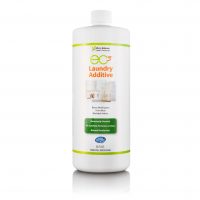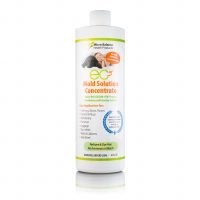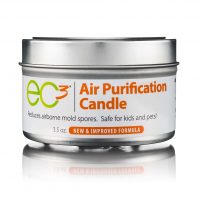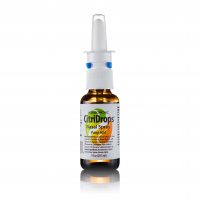
Mould Testing Plates
Did You Know?
Mould (fungus) is found in all environments where it plays a vital role in our ecosystem: biodegrading waste organic matter (old leaves, unpicked fruit, etc.).
Indoor mould problems increased greatly over the last 50 years due to new construction methods and materials utilized and ineffective maintenance procedures. To conserve energy, buildings have been sealed tight, preventing fresh air from entering a building and sealing in moisture. Once moisture enters the building, mould has everything it needs to grow:
1) a food source, such as wood supports, drywall backing, wall paper, carpet, cabinetry, books, etc.
2) a water source, such as a burst pipe, roof leak, poorly graded building site, or other moisture causing condition
3) warm temperatures (40-120°F)
Without the natural competition of other moulds and bacteria found outside, indoor mould spores grow unchecked, eventually reaching a level that affects human (and pet) health. The result is that auto-immune diseases have increased, the occurrence of asthma has skyrocketed, and Alzheimer’s has become common.
Facts about mould
– Mould must have moisture to grow. Control the moisture and you control the mould!
– Once mould has grown, it does not just go away. Mould spores are like seeds and can remain dormant for years.
– You cannot always smell a mould problem. Although musty smells may indicate mould growth, mould can also grow without creating an odour.
– Mould is more than just an allergen. Mould can cause serious health effects far beyond those that are commonly known.
– Black Mould is not the only dangerous mould. Many mold species can cause health effects in those who are susceptible.
– New buildings can have a mould problem. Quite often mould grows in new buildings due to moisture being trapped inside during construction, or through the use of contaminated building materials.
– 24% of the population in America is mould susceptible. Quite often other people in the same building will think you are crazy, because you are sick and they are not.
– Most school systems do not have budgets to properly monitor for, or eliminate, mould contamination. Look for these symptoms in your children:
Difficulty Focusing
Difficulty Learning
Mood Swings
Headaches
Easily Agitated
Disobedient
Excessive Illnesses
Sinus Infections
– Mould will grow in any area that has a food source, moisture and a reasonable temperature (40-120°F).
Where is Mould Found?
Mould can be found anywhere water is allowed to remain for 48 hours or more. Humidity above 45% can also lead to mould growth.
Common sources of moisture include the following
Roof Leaks – One of the most common routes of moisture intrusion into a building, especially those buildings with flat roofs. The leaks may be from an old decaying roof, weather related damage, bad flashings, gutter or canale leaks. Close attention should be paid to seals around all roof penetrations, including around chimneys.
Windows – Bad window seals can lead to moisture intrusion into the building. Additionally, condensation on windows can result in mould growth.
Sinks – Plumbing leaks in the water supply or in the drain pipes can lead to mould growth. Additionally, high humidity in cabinetry below the sink may allow mould to grow on the cabinetry.
Refrigerators – The water line leading to the ice maker can leak, leading to mould growth in the wall or cabinetry surrounding the refrigerator. The drain pans of refrigerators may also contribute to mould growth if moisture is often present.
Closets – High humidity or flooding combined with clutter may allow mould growth.
Laundry Room – Leaks from the washer plumbing (hot and cold water faucets and drain), improperly vented dryers (especially those that do not exhaust to the outside) and front loading washers that do not completely drain may lead to mould growth.
Air Conditioning Systems – Condensation from air conditioning, or excessive humidity from swamp coolers, can contribute to mould growth within the Heating, Ventilating and Air Conditioning (HVAC) system. Additionally, some buildings have insulation inside of the ducting that provides a service and a food source for mold growth.
Basement – Water seepage into the basement through the walls and flooring can provide the necessary moisture for mould growth. Flooding of basements is also a large concern.
Bathrooms – The areas of concern in bathrooms include plumbing leaks around the sink, bathtub and shower , and elevated humidity from bathing or showering.
While most people don’t ever consider the need to purchase a mould test kit , there are times when it comes a very good idea to safeguard health. Understanding what is in a home, office or school environment is essential when there is a concern about mould, or health problems that may be related to its growth are already present.
In homes with smoke detectors, carbon monoxide detectors, and even a burglar alarm or two, it’s easy to let our guard down and imagine that nothing can harm you or your family. Mold, however, is often an unseen menace that does anything it needs to in order to “stick around”.
There are a variety of different moulds that can grow in a home or office environment. The most dangerous type that is commonly found in homes is Stachybotrys , which is known as black mould , or toxic black mould .
Mould growth in a home or office environment can be bad news. While not all growths are as dangerous as Stachybotrys, it is best to find out exactly what is present. Mould test kits from ImmunoLytics are a convenient and affordable option for anyone looking to test for mould .
When testing using ImmunoLytics mould testing plates, you will get the benefits of their extensive experience in mould and mould test procedures. In fact, they are the leading mycology lab used by environmental and medical professionals across the USA. They specialize in providing mould test kits and analysis for hospitals, homes, offices, schools and more. Their expertise in providing and analyzing mould test kits is extensive, and assistance to clients doesn’t end with a simple mold test.
At ImmunoLytics, they strongly believe it is their responsibility to help clients throughout the entire mould test and remediation process. When you purchase one of their mould detector kits, they follow up the testing with a phone conference to discuss results and any recommendations that might be necessary.
When you order a mold testing detector test kit from ImmunoLytics to test for mould, you can rest assured that you are getting top quality results and service – they care as much about your family’s health as you do. Their mould test kits are designed to signal the presence of mould – just like a smoke alarm going off – to allow you and your family time and information that can be used to combat the issue.
Using the ImmunoLytics mould test kit/kits and the simple step-by-step guide to mould testing, you can perform your own in-home mould testing in only an hour!
The mould testing plates kit offers
– professional analysis by certified mould specialists
– post-analysis phone consulation with one of their mould experts
– 24/7 online access to your full-color lab results (available within one week of your submission)
– a comprehensive list of the specific mold genus (type)
Is Black Mould Lurking In Your Home Or Office?
Mould is a perfectly natural growth that is found in all environments. It is essential for the ecosystem and has a vital role to play. Unfortunately, not all types of mould are safe for co-existence within enclosed environments with humans. When there is a concern about potentially toxic growths, a mould detector is a must to determine the exact types and the mould count in a particular environment.
When a mould test is ordered, Stachybotrys, known as black mold or toxic black mold, is the strain that most people are trying to rule out or confirm. Black mould is among the most toxic moulds commonly found growing in buildings. It has been documented to lead to asthma, bronchitis, respiratory bleeding and cognitive loss. However, black mould can lead to any number of the health effects listed below, depending on the immune system of the individual.
Symptoms and/or conditions that may indicate a need to purchase a mould test kits to determine if black mould is present include:
– Sinusitis
– Fibromyalgia
– Chronic Fatigue Syndrome
– Arthritis
– Allergic Fungal Sinusitis
– ALS (Lou Gehrig’s disease)
– Chronic Rhinosinusitis
– Asthma
– Hearing Loss
– Restless Legs Syndrome
– Psoriasis
– Vertigo & Dizziness
– Gastric Reflux Disease (GERD)
– Systemic Fungal Symptoms
– Irritable Bowel Syndrome
– Muscle Weakness
– Polycystic Ovary Syndrome
– Brain Fog
– Headaches
– Migraines
– Sleep Disorders
– Rashes
– Meniener’s Disease
and more. . . . . .
Stachybotrys became known as black mould due to its appearance. Quite often it will be seen growing on drywall, wood, carpet, etc. as a somewhat black blob. However, many other mould species are also black in appearance. Therefore, it is important to perform a mould test on the visible mold to determine if it is Stachybotrys or some other type of mould.
Not sure what to order?
We recommend one (1) test plate per area to be tested up to 12 ft by 12 ft. Areas to test include rooms in which you know of (or suspect) a water leak (i.e. roof leak, plumbing leak, etc.), as well as any room in which you spend a lot of time, such as bedrooms or living rooms, kitchen etc.
If you have a mould problem or suspect a mould problem ACT QUICKLY.
Mould damages what it grows on.
The longer it grows, the more damage it can cause.
To order mould testing plates, go to Mould Plates



